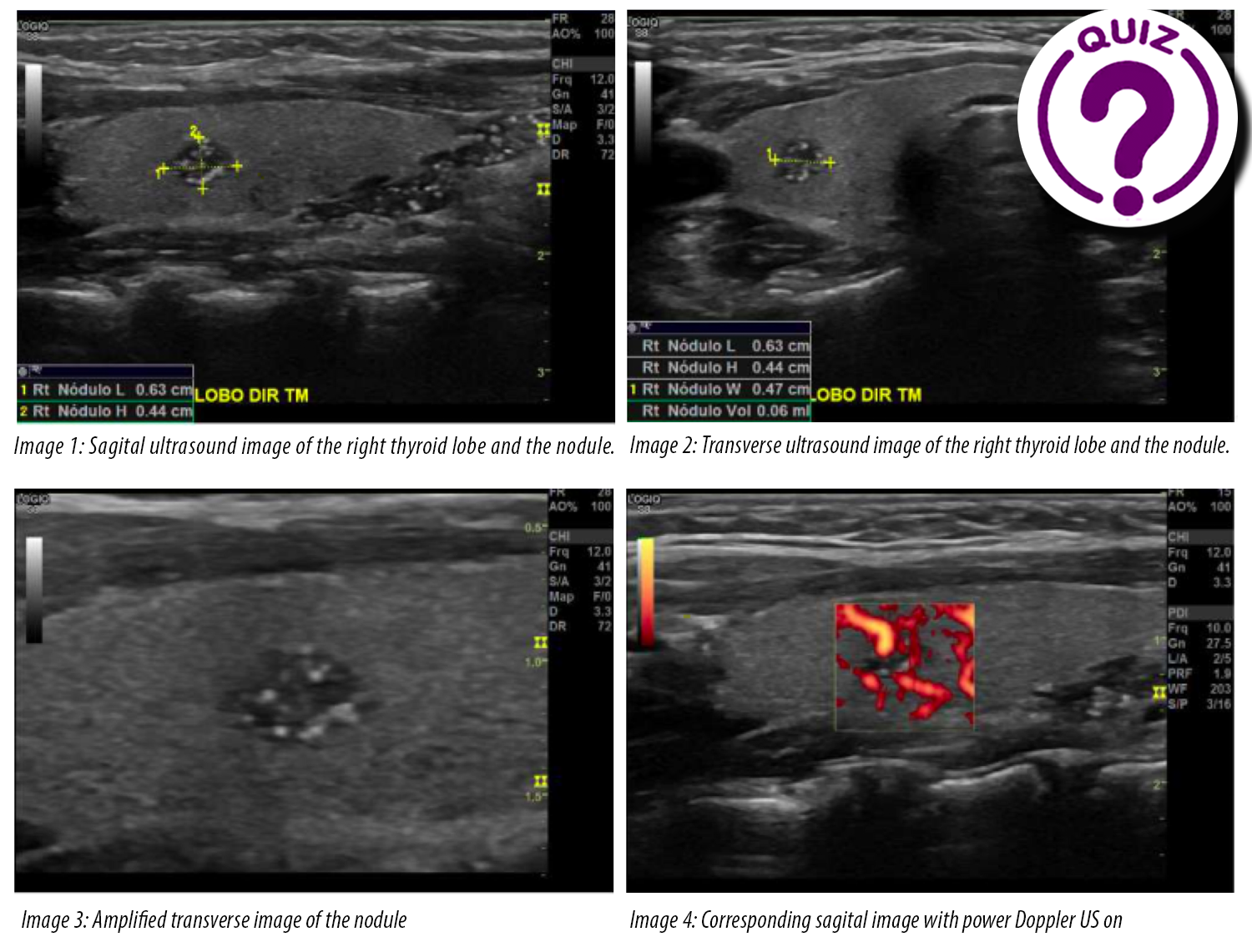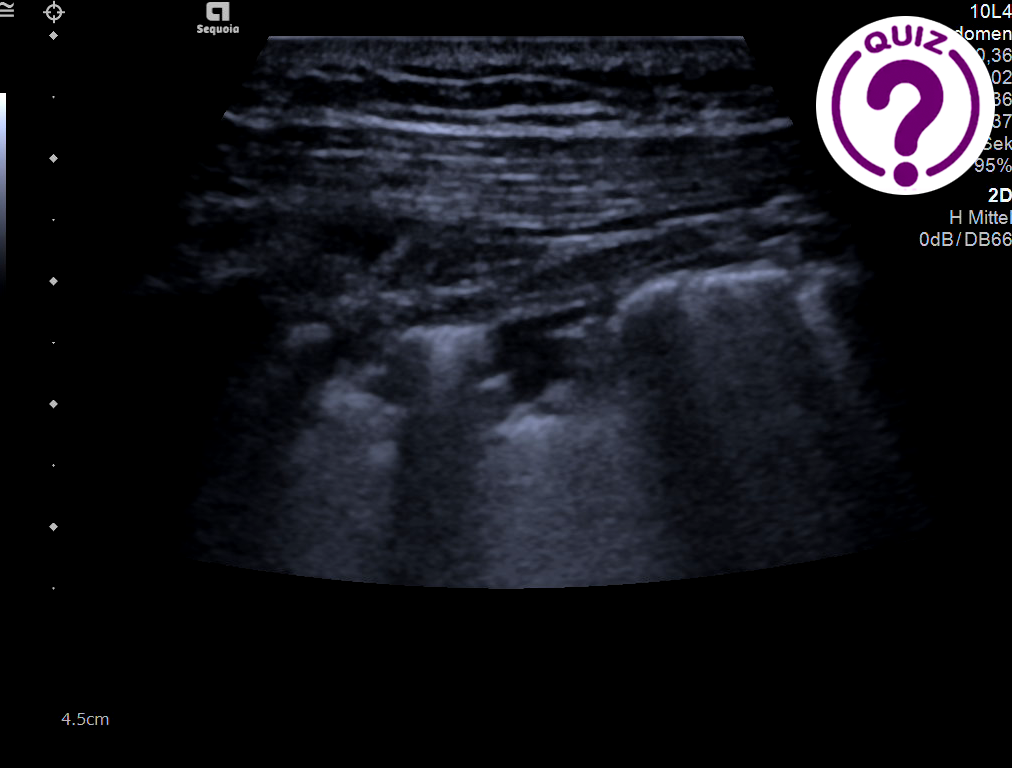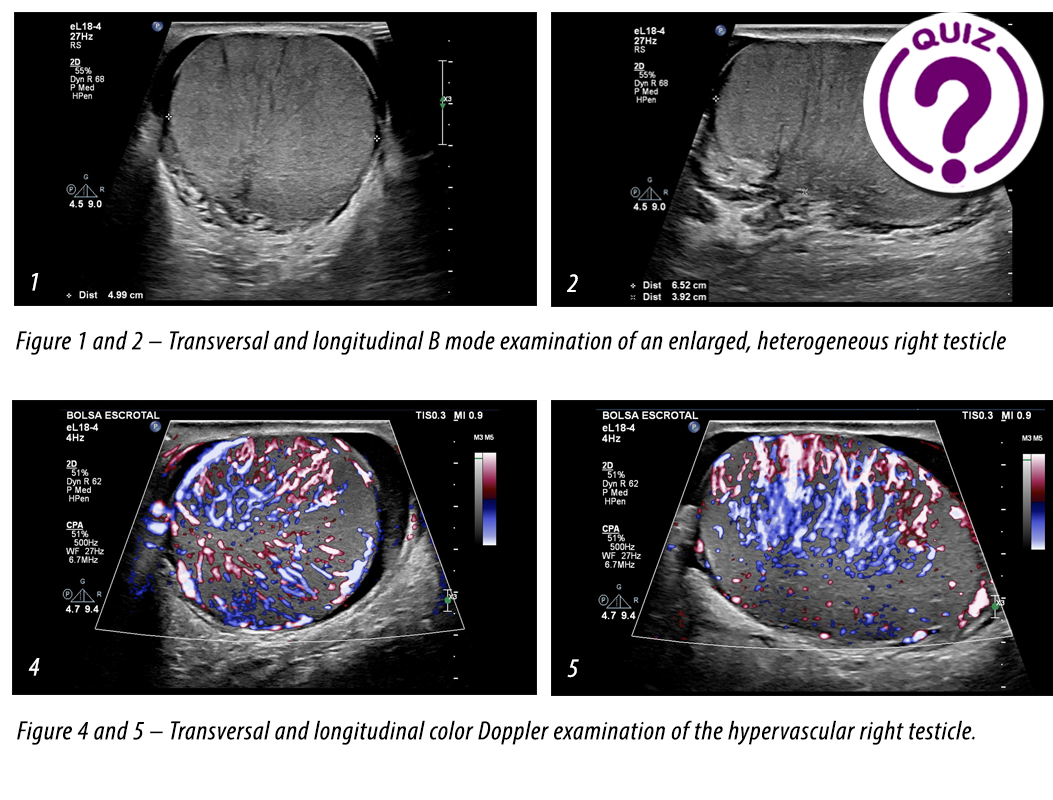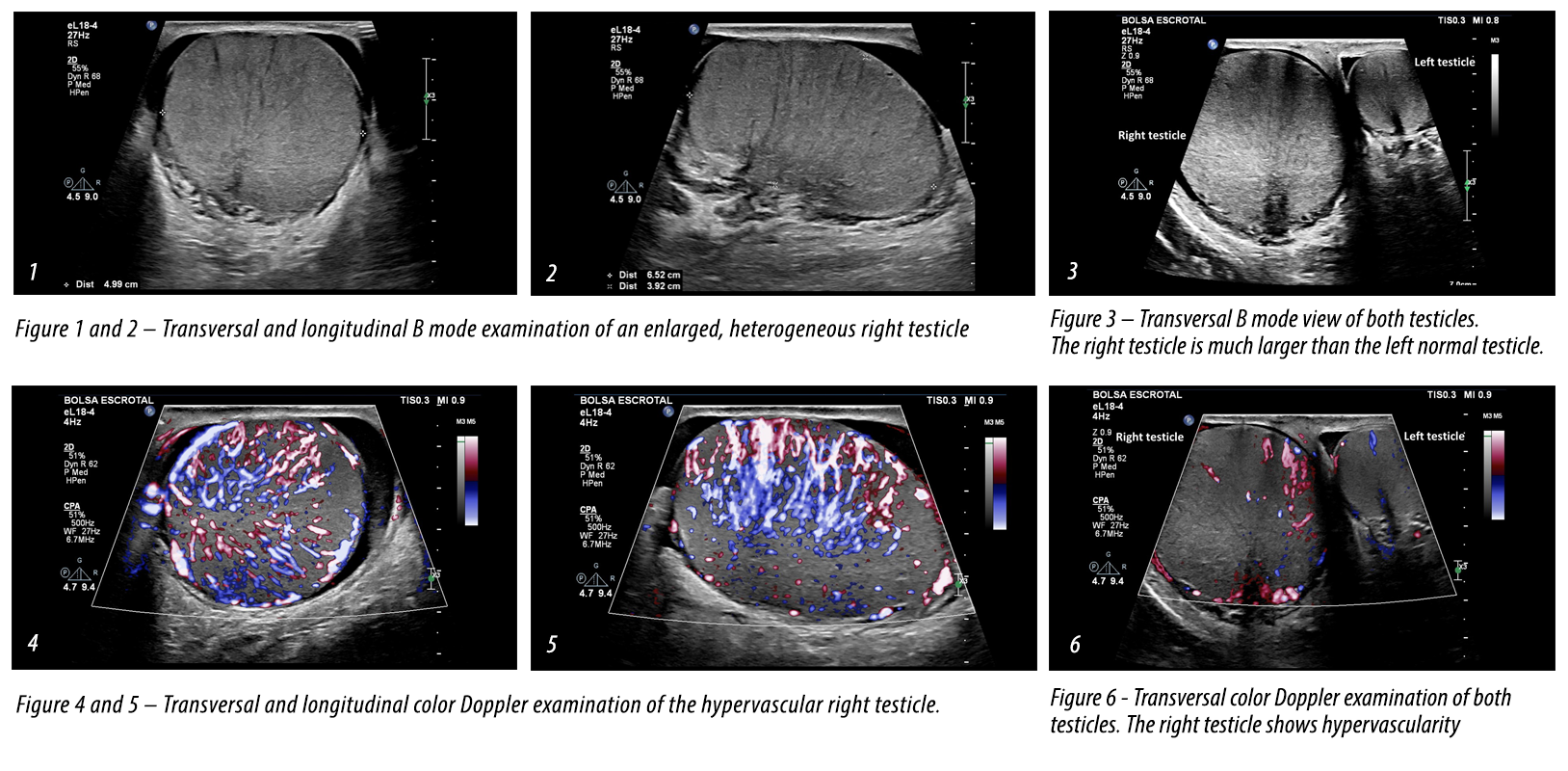
Case of the Month November 2020- Thyroid lesion
November 2, 2020
Case of the Month December (2) 2020- Imaging of the pleura line, lung surface and artefacts
December 14, 2020By Osmar Saito, MD and Maria Cristina Chammas MD, Director of Ultrasound
Clinicas Hospital, Department of Radiology, School of Medicine, University of São Paulo, São Paulo, Brazil
Clinical History:
A 36-year-old male with a history of intermittent pain in his right testicle was admitted to the emergency radiology ward with a fast enlarging testicle, without previous trauma. He had also lost weight. Physical examination revealed an enlarged firm testicle without pain on the right side and a normal left testicle. The patient had no fever, no trauma, no chronic disease and denied any sexually transmitted diseases. After some time the patient remembered that 6 years previously he had had leukemia and had underwent a bone marrow transplant.
Ultrasound:
B Mode US in the supine position showed a heterogeneous, enlarged testicle (Figure 1, 2 and 3). Color Doppler showed that the right testicle had an increased vascular pattern (Figure 4, 5 and 6).
Quiz-summary
0 of 1 questions completed
Questions:
- 1
Information
View the December Case below, answer the question and then click check >
You have already completed the quiz before. Hence you can not start it again.
Quiz is loading...
You must sign in or sign up to start the quiz.
You have to finish following quiz, to start this quiz:
Results
0 of 1 questions answered correctly
Your time:
Time has elapsed
You have reached 0 of 0 points, (0)
Categories
- Not categorized 0%
- 1
- Answered
- Review
-
Question 1 of 1
1. Question
Question: What is the diagnosis?
Correct
CORRECT ANSWER EXPLAINED BELOW Correct answer is: Leukemia
Image Findings:
The examination revealed an enlarged, heterogeneous right testicle, with a normal epididymis. Also, a small homogenous fluid collection, corresponding to a hydrocele was seen (Figure 1 and 2). The color Doppler study showed a pattern of hypervascularity.
Discussion
Leukemia is a cancer of the body’s blood-forming tissues, such as the bone marrow and the lymphatic system. Leukemia can affect adults and children. In acute lymphocytic leukemia, the brain and the spinal cord and the testes in boys are known as sanctuary sites of cancer. Sanctuary sites are extramedullary anatomic locations that have historically been difficult to penetrate with systemic chemotherapy. In the testes, the finding of an enlarged firm testicle and hyperactivity on color Doppler similar to inflammatory findings, should remind the physician of leukemia of the testis.
Teaching Points
Although an enlarged testicle due to leukemia is a rare ultrasound finding, it is important to remember this diagnosis when dealing with a patient with a previous history of leukemia. The differential diagnoses include inflammatory diseases, but the clinical finding of a painless testicle is very important, as this indicates leukemia more than inflammation.
References
- https://radiopaedia.org/articles/leukaemia-testicular-manifestations-1?lang=us
- Kocakroc E, Bhatt S, Dogra V S; Ultrasound Evaluation of Testicular neoplasms. Ultrasound Clinics (2), 27-44, 2007.
- Dogra V, Gottlieb RH, Oka M et al. Sonography of scrotum. Radiology, 227:18-36, 2003.
- Hortsman WG, Melson GL, Middleton WD et al. Testicular tumors: findings with color Doppler US. Radiology, 185: 733 -37, 1992.
Incorrect
CORRECT ANSWER EXPLAINED BELOW Correct answer is: Leukemia
Image Findings:
The examination revealed an enlarged, heterogeneous right testicle, with a normal epididymis. Also, a small homogenous fluid collection, corresponding to a hydrocele was seen (Figure 1 and 2). The color Doppler study showed a pattern of hypervascularity.
Discussion
Leukemia is a cancer of the body’s blood-forming tissues, such as the bone marrow and the lymphatic system. Leukemia can affect adults and children. In acute lymphocytic leukemia, the brain and the spinal cord and the testes in boys are known as sanctuary sites of cancer. Sanctuary sites are extramedullary anatomic locations that have historically been difficult to penetrate with systemic chemotherapy. In the testes, the finding of an enlarged firm testicle and hyperactivity on color Doppler similar to inflammatory findings, should remind the physician of leukemia of the testis.
Teaching Points
Although an enlarged testicle due to leukemia is a rare ultrasound finding, it is important to remember this diagnosis when dealing with a patient with a previous history of leukemia. The differential diagnoses include inflammatory diseases, but the clinical finding of a painless testicle is very important, as this indicates leukemia more than inflammation.
References
- https://radiopaedia.org/articles/leukaemia-testicular-manifestations-1?lang=us
- Kocakroc E, Bhatt S, Dogra V S; Ultrasound Evaluation of Testicular neoplasms. Ultrasound Clinics (2), 27-44, 2007.
- Dogra V, Gottlieb RH, Oka M et al. Sonography of scrotum. Radiology, 227:18-36, 2003.
- Hortsman WG, Melson GL, Middleton WD et al. Testicular tumors: findings with color Doppler US. Radiology, 185: 733 -37, 1992.


